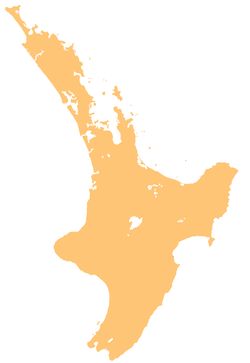Morrinsville
| Morrinsville | |
|---|---|
| Coordinates: 37°39′S 175°31′E / 37.650°S 175.517°ECoordinates: 37°39′S 175°31′E / 37.650°S 175.517°E | |
| Country |
|
| Region | Waikato |
| Territorial authority | Matamata-Piako District |
| Ward | Morrinsville |
| Electorate | Waikato |
| Government | |
| • Mayor | Jan Barnes |
| Population (June 2016) | |
| • Total | 7,600 |
| Time zone | NZST (UTC+12) |
| • Summer (DST) | NZDT (UTC+13) |
| Postcode | 3300 |
| Area code(s) | 07 |
Morrinsville is a provincial town in the Waikato region of New Zealand's North Island, with a population of approximately 7,000. The town is located at the northern base of the Pakaroa Range, and on the south-western fringe of the Hauraki Plains. Morrinsville is around 33 kilometres east of Hamilton and 22 kilometres west of Te Aroha. The town is bordered by the Piako River to the east and the Waitakaruru Stream to the south.
Prior to European settlement of New Zealand, the hills around present-day Morrinsville were occupied by the Ngati Werewere Māori people of the Ngati Haua Iwi, and the site of the present-day town was on or near to an old Māori route between the upper Waihou-Piako basin and the Ngaruawahia area. Following European settlement, some early European traders are believed to have traversed this route prior to 1834 when the Rev. J. Morgan travelled up the Piako River to near the future town site and crossed west to Horotiu, near Ngaruawahia. First recorded contact with European settlers occurred around 1850, with John Johnson trading with the Māori from 1852.
The 1860s saw an influx of European settlers to the area between Te Aroha and Matamata, and in 1873 two settlers from Auckland, Thomas Morrin, purchased the Kuranui No 1 Block from the local Māori on 13 December 1873 and founded the Lockerbie Estate which Morrin named after his father, who emigrated from the Scottish town of Lockerbie. In May 1874 Morrin purchases two further blocks, Motumaoho No.1 and No.2, and his estate now totaled over 30,000 acres. The fledgling village was to be the service centre for Morrin’s Lockerbie Estate and he built a blacksmith's shop, manager's house, the Jolly Cripple Hotel and general store and donated land for a school. Morrin hired Irish navvies from the gold fields to dig a network of drains to dry the land, enabling it to be used for agriculture, along with a need for houses for the workers. In 1882 Morrin surveyed the land for the site of the town proper, and deposited plans for ten streets: Anderson, Hamilton, Studholme, Moorhouse, Lorne, Canada, Cureton, Somerville, Thames and Thorpe (the first and last three streets were named after family members).
...
Wikipedia

